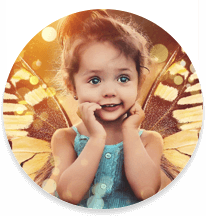Sensory Integration
I tak się dzieje...
Sensory Integration


Sensory Integration theory and intervention entered Poland in 1993/1994 thanks to Violet Maas OTR, FAOTA, SII Teacher, Postgraduate diploma in SI (1960) USC, dr. J.Ayres, Certificate in SCSIT (1972).
We are very grateful to her for bringing SI to Poland for free in economically difficult times for us.
Violet Maas has lectured around the world since 1975 (9 European countries, Japan 1976, 1985-86, New Zeland 1986-88).
Between 1993-2005 she has kept coming to Poland regularly to give SI Certification trainings and workshops.
She has certified few Polish SI instructors to be allowed to teach SI theory and practice in Poland and neighboring countries.
Since then we have been organizing SI workshops leading by international lecturers from US, Europe and Polish experienced therapists.
Due to the shortage of Occupational Therapists the decision has been made to allow other professions ( psychologists, special educators and educators) working in public facilities with SPD, LD, ADHD, Autistic children to be certified in SI theory and therapy.
Within last 15 years Sensory Integration therapy has become very popular in Poland but still not all children in need have an access to SI services.
Since 2002 Polish SI scene has been divided into groups of different approaches and standards in delivering SI trainings and services.
To meet the needs of Polish children and to follow original Sensory Integration standards Polish SI instructor Małgorzata Karga has developed Polish model of SI trainings. Courses have been extended by adding special modules ‘Movement’ lectured by PT-SI and ‘Communication and Attachment’ lectured by Psychologist-(SI), 3 case studies and 3 supervisions, written exam of Neuroscience and SI Theory.
Unfortunately this is not the only model available in Poland. There are SI trainings for therapists that violate Ayres' core defining elements of Sensory Integration intervention (Parham et al., 2007, 2011).
Since 2009 the Polish SI Certification model is as follows:
SI Module 1: Foundations and Neuroscience
This module is designed to equip participants with the knowledge required to apply current theories to their everyday practice.
Length: 4 days.
SI Module 2 and 3: From Assessment to Interpretation
These modules aim to develop the participants’ skills in evaluation and clinical reasoning based on a sensory integration framework.
Module 2 includes pair work, demos and video presentations.
Module 3 includes hands-on experience, group work with children.
Length: 2 x 6 day blocks. (Participants must attend both blocks of this course).
SI Module 4 and 5: Treatment
These modules are designed to enable students to develop in-depth knowledge and experience in SI and therapy in order to support critical analysis and evidence of interventions.
Module 4 includes pair work, demos and video presentations.
Module 5 includes hands-on experience, group work with children.
Length: 2 x 5 day blocks. (Participants must attend both blocks of this course).
During and after the training participants prepare 3 case studies and attend 3 supervisions.
At the end of the course participants take written exam of Neuroscience and SI Theory.
To promote Ayres Sensory Integration® the Polish Association SISM has been established. It is an officially registered in Poland, non-profit organization.
Our goal is to help people in Poland to understand what ASI is and what it is not and provide high quality trainings as opposed to many other trainings for therapists that violate Ayres' core defining elements of Sensory Integration intervention (Parham et al., 2007, 2011).
